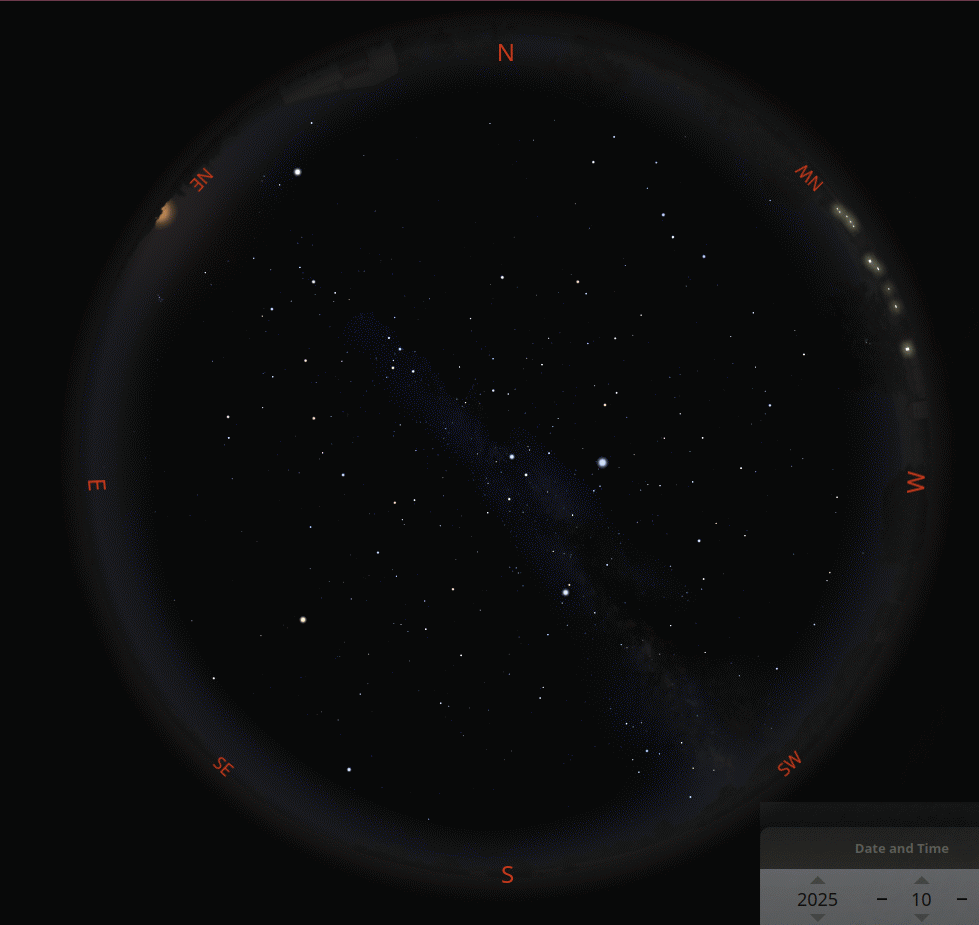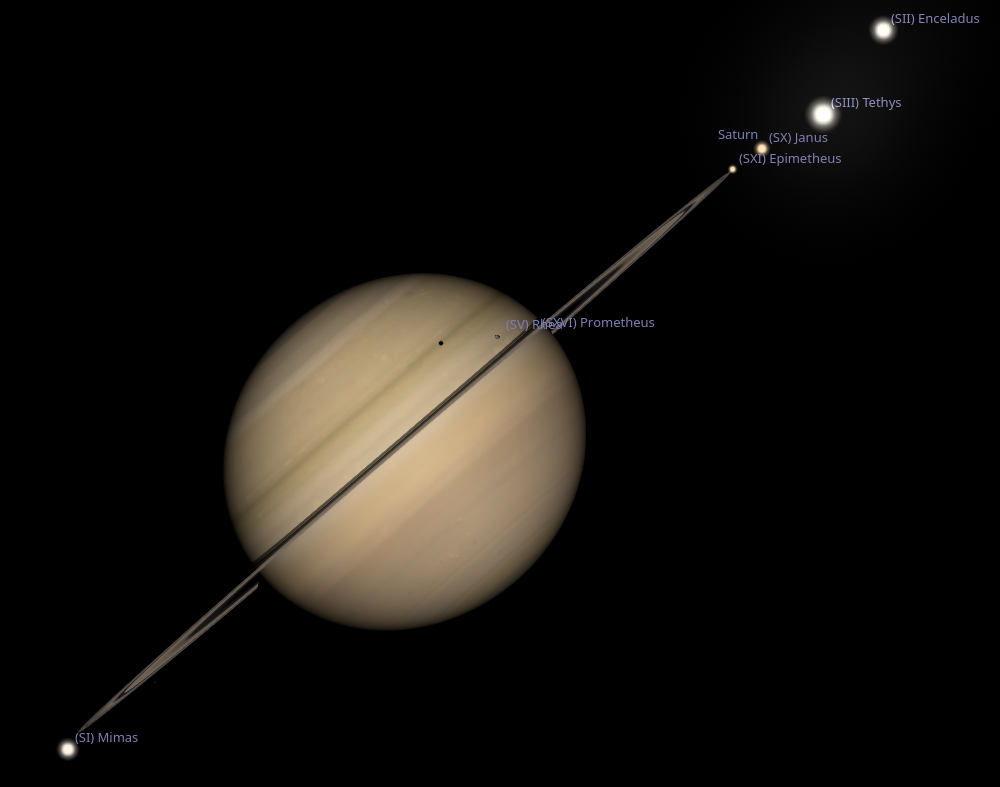
Note added the next day: Thanks to our excellent student volunteers, the event was a success. Around 120-150 visitors came to look at Saturn (through the 12-inch), M15 (14-inch), Albireo, the Moon, and other objects. A layer of clouds interrupted the party from about 8 to 9 PM, so I gave a brief presentation on exoplanets inside. Those who stuck around afterwards had a chance to glimpse the bulge of the Andromeda Galaxy through the 14-inch.
Early in the evening, we'll see the summer constellations led by the Summer Triangle drifting to the western side of the sky, while the autumn constellations rise in the East.

The brightest three stars in the sky make up the Summer Triangle; can you name any of the stars? In the eastern half of the sky, I've highlighted four constellations in particular which are all joined in a Greek myth involving a sea monster. (Click on the image for an inverted version)
The star of tonight's show will be Saturn. Its rings are currently edge-on, appearing like a knife's edge slicing across the planet. A number of moons will circle nearby. Click on the image to see their names.
If one looks VERY closely, and the Earth's atmosphere cooperates, one might see two tiny shadows sliding across Saturn's cloudtops.

As always, a number of satellites will sweep across the sky tonight. If you'd like to know the identity of any bright satellite, visit the Heavens-above website. Enter your location and a date, and the site will give you a list of the brightest satellites scheduled to zip overhead; it also can tell you when the ISS or the Chinese space station will make an appearance. Here are the three brightest satellites for tonight (click on the image for a longer list).
You've probably heard that light travels very quickly: 300,000 km/sec, or roughly 700 million miles per hour. Here on Earth, distances are so small that the time its takes for light to travel to our eyes from, say, a car or distant house is negligible. We see things just as they are happening, with no delays.
Space, on the other hand, is big. ( Really big. You just won't believe how vastly hugely mind-bogglingly big it is. I mean, you may think it's a long way down the road to the chemist, but that's just peanuts to space.) So big that even light can take quite a while to complete the journey. When we look at an object in the sky, we are seeing the light that it emitted in the past. How far back into the past? Well, that depends on the object. Below are a list of some objects you might see tonight.
How far back into the past can YOU see?
| Satellite | Moon | Saturn | Vega | Deneb | M15 | Andromeda Galaxy |
| 0.001 sec | 1 sec | 1 hour | 25 years | 1,400 years | 35,000 years | 2.5 million years |
Thanks very much to the AST graduate students who volunteered to run the telescopes, point out constellations and tell the stories behind them, and answer our visitors questions.
From left to right are
| Sophia Sosa Fiscella | Rain Naylor | Grace Quinn | Scott Adler | Jon Sabrowski | Zoe Rosenberg | Sadie Coffin | Ryan Butler |
Not shown is Stacey Davis, who had to leave the event earlier.

Sadie ran the 14-inch all evening, showing visitors the globular cluster M15 and, at the end of the event, M31. I think it looks pretty in this shade of deep red.